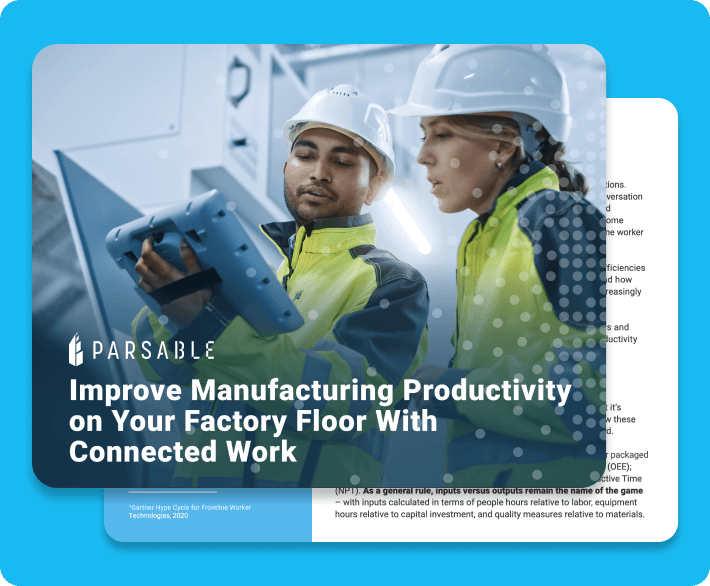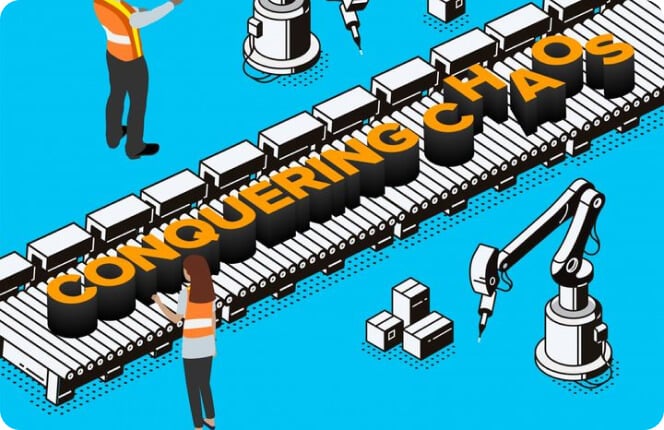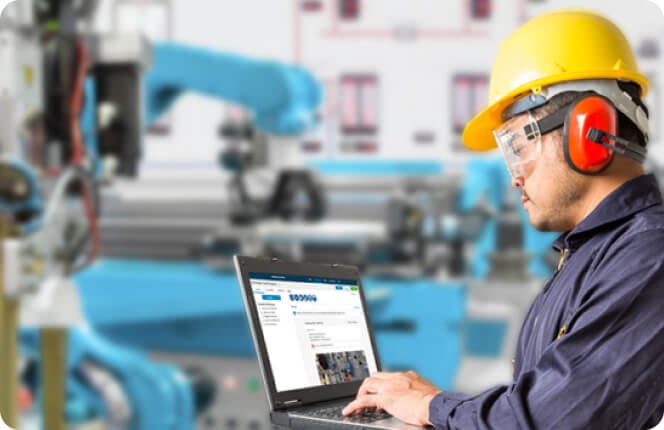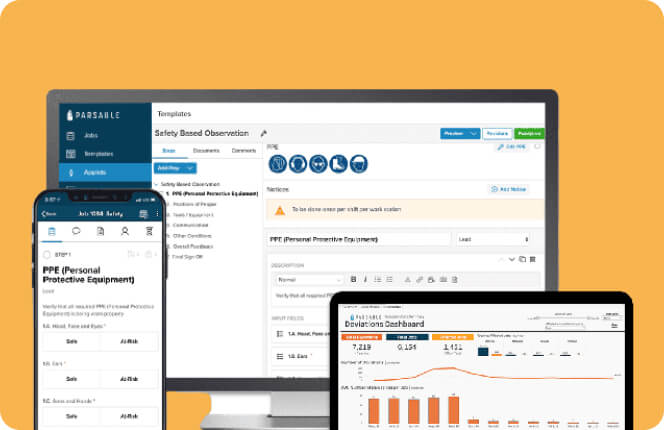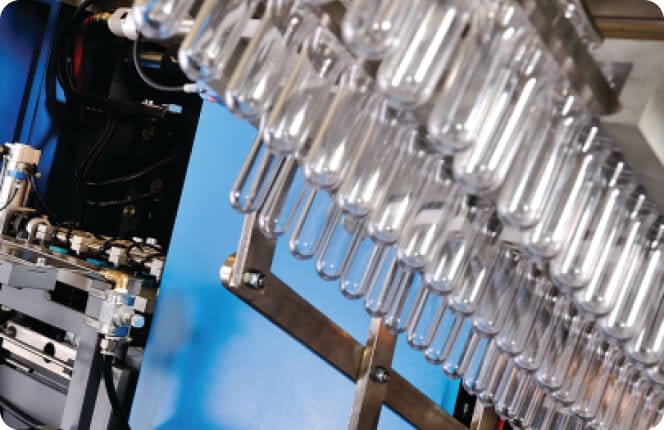Throughout decades of change, operational excellence has remained a marquee priority for manufacturing companies across various industries—consumer packaged goods (CPG), automotive, transportation, and beyond.
By now, many manufacturers know their operational efficiency has massive implications on profitability, end-user experience, and internal team engagement. As technology and consumer demands rapidly evolve, manufacturing leaders are realizing the dawn of a new season of opportunity: Industry 4.0.
Table of Contents
The History of Technology and Manufacturing: The Evolution to Industry 4.0
The Connection Between Digital Maturity and Digital Transformation in Manufacturing
The Benefits of Embracing Digital Transformation
Building Your Roadmap to Digital Maturity
Implementing Connected Worker Technology
How to Evaluate Connected Worker Technology
Achieving Digital Maturity and Transformation with Connected Worker®
Staying Ahead of the Digital Maturity Curve
As more manufacturing companies feel and begin the shift into Industry 4.0, the connection between digital maturity and operational excellence is becoming more clear than ever. Today, digital transformation and connectivity are the key to staying ahead of the curve. Here’s what manufacturers need to keep up with the digital revolution and enter Industry 4.0 with a confident, competitive edge.

Industry 1.0
The Rise of the Industrial Revolution
The history of technology in manufacturing began in the late 18th century with the first Industrial Revolution. With the introduction of steam power, both England and the United States quickly departed from the handcrafted economy. As factories reached new levels of production and efficiency, machinery rose to the forefront of manufacturing.
Industry 2.0
The Beginning of the Technological Revolution
Nearly a century later, the advent of electricity brought the second industrial revolution, also known as Industry 2.0. Electrically powered machinery enabled the assembly line and mass production, resulting in less pressure on direct human effort at each stage of production.
Industry 3.0
The Ascent of the Digital Revolution
In the 1970s, manufacturing processes entered “The Digital Revolution,” brought on by the rise of computers and complex machinery. Industry 3.0 introduced two game-changing factors: automation and insights.
The challenge lies not in deploying technology, but rather in connecting insights, processes, and teams to make informed, proactive decisions that drive the next level of growth.
Industry 4.0
Ascending the Digital Maturity Curve
Today, many manufacturers find themselves caught between Industry 3.0 and Industry 4.0. As leaders look for new ways to grow, isolated, paper-based processes put them at a disadvantage and jeopardize their ability to adapt.



Industry 4.0 is about maximizing safety, productivity, and profitability through connectivity.
Technology and market demands continue to evolve faster than ever, meaning that companies are now looking for ways to stay ahead of the curve. While many manufacturing leaders have deployed new methods and technologies, the fact remains that profitability relies on connected data, teams, and processes.
Ascending the digital maturity curve comes down to the power of your insights and decision-making…and having the right tools to digitize your frontline.
The Connection Between Digital Maturity and Digital Transformation in Manufacturing
Digital transformation refers to integrating digital technologies into all areas of a business, resulting in fundamental changes to how the business operates and delivers value to customers.
In manufacturing and industrial settings, digital transformation is essential for remaining competitive, efficient, and sustainable in today's rapidly changing and increasingly digital world. However, successful transformation is intrinsically linked to where manufacturers lie on the digital maturity curve.
Utilize our Manufacturing Scorecard today:
The digital maturity curve assesses a company’s digital readiness for integrated and connected work technologies.
Ultimately, digital maturity comes down to a company’s digital foundation: do they have the mindset, tools, and systems to support the digital transformation needed for connectivity?
Ascending the Digital Maturity Curve Through the Four Phases of Digital Transformation

Phase I: Digital Isolation
When manufacturers rely on paper-based processes and workflows on the frontline, this leads to digital isolation. In other words, manual workflows create restrictions when it comes to communicating between teams, accessing accurate data, and creating safety and training processes.
As a result, workers are getting left behind. Without on-the-go access to the right information at the right time, people are put at a disadvantage, which puts safety, quality, and efficiency at risk.
So how do manufacturers bring their companies out of digital isolation?
Bottom line? It comes down to digital readiness, transformation, and utilizing the right tools.
Parsable Point: Schedule a customized demo to see Parsable in action and understand how our technology and library of pre-built SOP templates will help you create new digital procedures.
Phase II: Building Your Digital Foundation
Goal: Drive Adoption of New Technology at Scale
Driving digitization isn’t just about implementing digital tools—you must enable scalability and the seamless adoption of new technologies by building your digital foundation. This is because implementing technology is more about changing behavior and mindset rather than changing the technology itself.
One of the first steps to building a solid digital foundation is optimizing your frontline work for the use of smartphones and tablets. Start first by streamlining data such as forms, checklists, audits, and inspections across quality, EHSS, production, and maintenance.
Parsable Point: Build your digital foundation by implementing the right mobile app, which includes channels for collaboration, process templates, and streamlined dashboards for insights.
Phase III: Connecting Your Workers
Goal: Real-Time Updates & Decision Making
After establishing a solid digital foundation and enabling frontline workers with the mobile technology they need to digitally complete their tasks while on the go, you can turn them into connected workers.
Connected workers are empowered through systems that are updated in real-time and connect them to the systems, people, and machines they need to provide accurate insights.
When workers are used to the new technology, behaviors such as pulling and integrating data from systems like ERP, CMMS, MES, IoT, and more are no longer hefty, drawn-out processes. Instead, the focus is on driving improvements and eliminating non-value-added activities throughout every workflow in every factory.
Real-time updates to and from the frontline are the only way to make your operations agile.
Parsable Point: Connect your workers through a mobile app, chat, collaboration, notifications, APIs, applets, and more.
Phase IV: Transforming Your Operations
Goal: Optimized Frontline Work within a Smart Manufacturing Ecosystem
The ultimate transformation comes from bringing together the puzzle pieces to form an adaptable ecosystem of solutions and partners.
This new ecosystem relies upon a fully realized and connected digital strategy to identify and integrate necessary elements, such as artificial intelligence or Smart Factory components. Additionally, a truly optimized frontline should allow workers to complete work with all known outcomes and responses to perform tasks safely and efficiently.
The key characteristic of a transformed operation is this: the cycle doesn’t stop with completion: all data surrounding tasks is fed back to the appropriate systems and used to measure and improve future processes.
As your facility moves away from digital isolation and toward a connected workforce, the entire operation shares in the benefit of your advanced digital maturity.
Parsable Point: Streamline production and optimize frontline processes by turning your workers into engaged problem solvers.
“When beginning their digital transformation, everyone looks at that pile of paper reports and says, “I’ll get to it tomorrow.” However, they’re missing tremendous information and value. As manufacturers reach for IoT and AI, they realize they have to start with the data that still sits in paper.
Years ago, I used the term “Perfect Plant,” to describe the journey of transferring paper processes to digital systems that connected frontline workers, processes, and data. We’re finally at the point where digital solutions are being deployed at enterprise scale.
As you begin your journey to the “Perfect Plant,” remember that digital transformation provides your frontline workers with a single, integrated solution. Look for a solution that connects them to the data and systems they need and empowers them to evolve their processes with confidence."
— Craig Bauhaus, SR Director, Industry Solutions, Parsable
The Benefits of Embracing Digital Transformation
Digital transformation is crucial for manufacturing and industrial settings to remain competitive, efficient, sustainable, and responsive to changing customer demands and market conditions. When companies embrace digital transformation and begin to ascend the maturity curve, they experience benefits such as:
Improved efficiency and productivity
Digital transformation can help streamline processes and workflows, automate repetitive tasks, and reduce manual errors, resulting in increased efficiency and productivity.
Improved compliance
Digital transformation enables better digital traceability and helps manufacturers track and source data to handle audits, inspections, and compliance to processes.
Better frontline visibility
Digital connectivity on the frontline means that supervisors and executives have better visibility into what’s working and happening where there has previously been little to no real-time insights.
Enhanced quality control
Greater agility and flexibility
Manufacturers who embrace digital transformation utilize technology to adapt to changing market demands, customer preferences, and regulatory requirements.
Improved safety conditions
Digital transformation enhances worker safety with remote monitoring of equipment and workers, real-time hazard alerts, and virtual trainings and simulation tools to improve worker skills.
Sustainable operations
Manufacturers can optimize energy consumption, reduce waste, and minimize their environmental footprint by leveraging technologies such as the Internet of Things (IoT), smart grids, and renewable energy sources.
Improved customer experiences
By leveraging digital technologies to improve production quality, manufacturers can offer customers a seamless, personalized, and convenient experience that meets their expectations.
Building Your Roadmap to Digital Maturity and Digital Transformation
Manufacturing leaders who prioritize digital transformation and invest in digital tools and systems such as connected worker technologies can gain a competitive advantage in the market and position their organizations for long-term success.
Connected worker technology is the ideal solution for advancing along the digital maturity curve. However, understanding where you currently stand on the curve is important.
Once you’ve assessed your digital maturity, parse out the roles and responsibilities of your team.
Return on investment (ROI)
Budgets
Cross-team collaboration
Organizational excellence
“Sustainability and environmental responsibility drive the way we operate across the Holcim US footprint and we work hard to meet these expectations. Leveraging a digital tool that creates a cohesive, agile platform for our environmental teams and site management to access inspection data not only helps drive accountability, but ultimately regulatory compliance to support our local permits and ESG objectives. Partnering with Parsable, is a great example of how Holcim MAQER, our open innovation unit, allows us to rapidly deploy cutting edge, user driven solutions at scale.”
As operational teams and frontline leadership assess connected worker technology like Parsable, they also prioritize areas such as:
Integration
Implementation
Ongoing support
Team impact
In a path toward greater digital maturity, all of these concerns are valid and should be discussed.
Taking an integrated approach where all internal stakeholders share the load of determining if the technology is a good fit is key to choosing and implementing the right connected worker technology.
How to Evaluate Connected Worker Technology
By carefully evaluating these factors, organizations can identify connected worker technology solutions that are well-suited to their needs and can deliver significant value. The key is looking for a Connected Worker technology provider that puts your people first. As you take a collaborative approach, evaluate these key considerations.
Quality and breadth of data
Does the technology help you contextualize results through data? Are the insights actionable? The Connected Worker platform you select should not only provide granularity but also help you uncover inefficiencies and opportunities for optimization.
Scope of resources from provider
This is your opportunity to ask hard questions about the level of support you can expect from your provider. Remember, advancing along the digital maturity curve requires a partnership, and often a guide.
Use cases
Identify specific use cases and business processes that can benefit from connected worker technology. Consider factors such as the type of work being performed, the level of collaboration required, and the safety and compliance requirements.
Integrations
Evaluate how the connected worker technology will integrate with your existing systems and infrastructure. This includes compatibility with legacy systems, data exchange capabilities, and ease of deployment.
Security
Consider the security implications of the connected worker technology, including data privacy, access control, and protection against cyber threats. Ensure that the technology meets your organization's security requirements and standards.
Usability
Evaluate the technology's user interface and user experience to ensure that it is intuitive and easy to use for workers. Consider factors such as the availability of training and support and the ability to customize the technology to meet specific needs.
Scalability
Consider the power of the technology to scale to meet your organization's needs as it grows and evolves. This includes adding new users, devices, and use cases as needed.
ROI
Consider the potential return on investment of the technology, including the potential benefits such as increased productivity, safety, and efficiency, as well as the potential cost savings.

Escape digital isolation
- Rely on paper-based processes and workflows on the frontline
- Experience major inefficiencies that inhibit ability to adapt

Build your digital foundation
- Make frontline work both digital and optimized for the use of smartphones and tablets
- Optimize for a modern-day, consumer-like mobile experience

Connect your workers
- Workers digitally complete their tasks while on the go
- Connected workers seamlessly access the right information through connections to people, systems, and machines

Experience transformed operations
- Combine your Connected Worker strategy with the new granular data points captured only through Parsable
- Recognize the future of frontline work is optimized work. Optimized work requires workers to be connected.
In today’s digital transformation age, there are various opinions, tools, and technologies to consider for your manufacturing company.
The key is selecting the right connected worker technology to meet you where you’re at on the digital maturity curve and help carry you through to operational excellence in the Industry 4.0 age.
Resources to Help You Fully Embrace Industry 4.0
Trusted by Manufacturing leaders Across the Globe
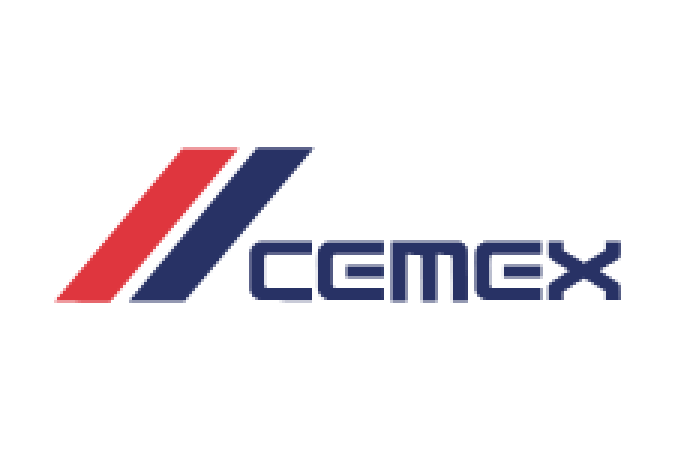


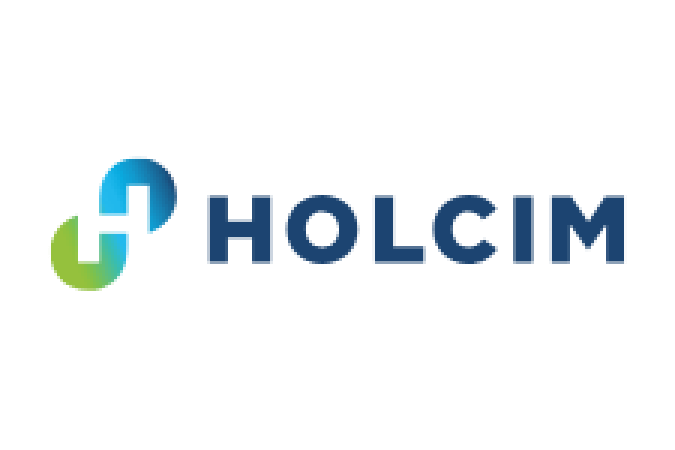
See How Connected Worker® Advanced Georgia Pacific Along the Digital Maturity Curve
Before leveraging Parsable’s Connected Worker solution, Georgia Pacific (GP) faced a number of challenges:
- Fluctuations across sites directly affecting profitability
- Site equipment and machinery differed widely
- Their retirement-aged workforce was departing in large numbers
- Tacit knowledge wasn’t being transferred to new talent
- Their standardized maintenance procedures were leading to unplanned downtime.
Implementing Connected Worker® involved:
- Providing standard and clear digital work instructions across corrugated sites
- Collaborating to document and share best practices to eliminate procedural mistakes and level up the workforce’s skill efficiency
As a result of choosing Parsable for their connected worker technology, Georgia Pacific saw:
+6%
$45 Million in gross margin contribution due to 6% improvement in OEE
25%
25% reduction in downtime during centerline audit process
+++
Faster and more reliable training and certification of new employees






